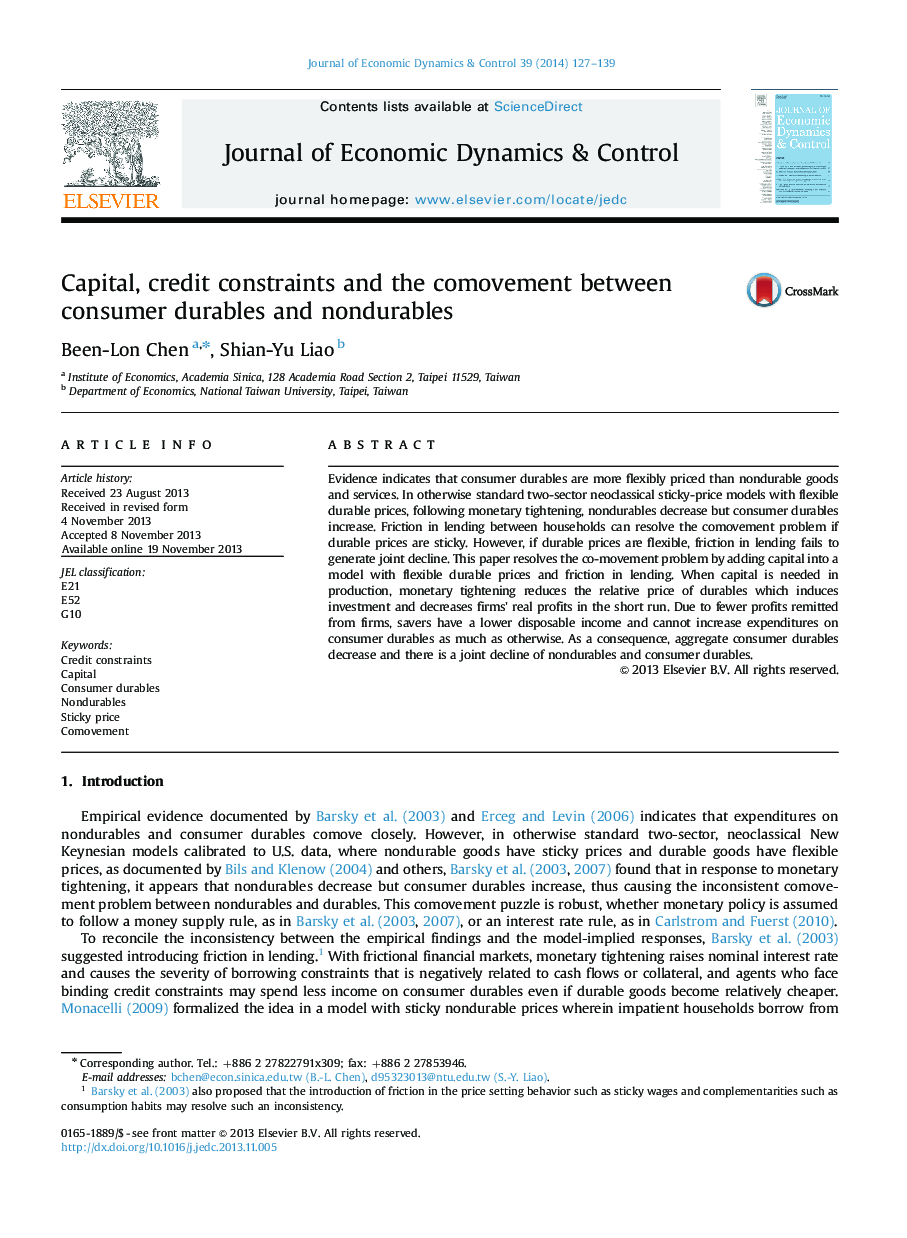| Article ID | Journal | Published Year | Pages | File Type |
|---|---|---|---|---|
| 5098607 | Journal of Economic Dynamics and Control | 2014 | 13 Pages |
Abstract
Evidence indicates that consumer durables are more flexibly priced than nondurable goods and services. In otherwise standard two-sector neoclassical sticky-price models with flexible durable prices, following monetary tightening, nondurables decrease but consumer durables increase. Friction in lending between households can resolve the comovement problem if durable prices are sticky. However, if durable prices are flexible, friction in lending fails to generate joint decline. This paper resolves the co-movement problem by adding capital into a model with flexible durable prices and friction in lending. When capital is needed in production, monetary tightening reduces the relative price of durables which induces investment and decreases firms' real profits in the short run. Due to fewer profits remitted from firms, savers have a lower disposable income and cannot increase expenditures on consumer durables as much as otherwise. As a consequence, aggregate consumer durables decrease and there is a joint decline of nondurables and consumer durables.
Related Topics
Physical Sciences and Engineering
Mathematics
Control and Optimization
Authors
Been-Lon Chen, Shian-Yu Liao,
